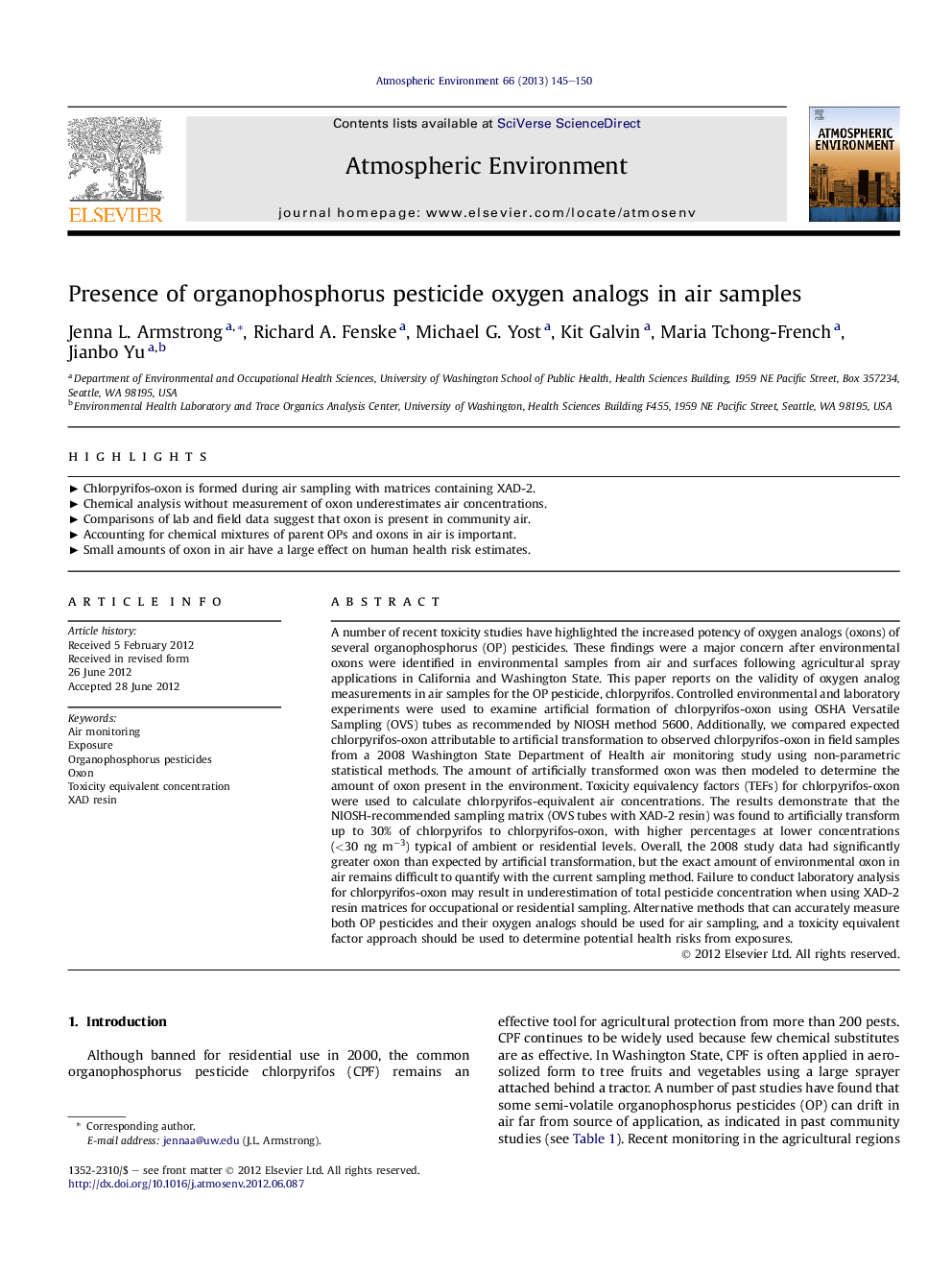| Article ID | Journal | Published Year | Pages | File Type |
|---|---|---|---|---|
| 4438412 | Atmospheric Environment | 2013 | 6 Pages |
A number of recent toxicity studies have highlighted the increased potency of oxygen analogs (oxons) of several organophosphorus (OP) pesticides. These findings were a major concern after environmental oxons were identified in environmental samples from air and surfaces following agricultural spray applications in California and Washington State. This paper reports on the validity of oxygen analog measurements in air samples for the OP pesticide, chlorpyrifos. Controlled environmental and laboratory experiments were used to examine artificial formation of chlorpyrifos-oxon using OSHA Versatile Sampling (OVS) tubes as recommended by NIOSH method 5600. Additionally, we compared expected chlorpyrifos-oxon attributable to artificial transformation to observed chlorpyrifos-oxon in field samples from a 2008 Washington State Department of Health air monitoring study using non-parametric statistical methods. The amount of artificially transformed oxon was then modeled to determine the amount of oxon present in the environment. Toxicity equivalency factors (TEFs) for chlorpyrifos-oxon were used to calculate chlorpyrifos-equivalent air concentrations. The results demonstrate that the NIOSH-recommended sampling matrix (OVS tubes with XAD-2 resin) was found to artificially transform up to 30% of chlorpyrifos to chlorpyrifos-oxon, with higher percentages at lower concentrations (<30 ng m−3) typical of ambient or residential levels. Overall, the 2008 study data had significantly greater oxon than expected by artificial transformation, but the exact amount of environmental oxon in air remains difficult to quantify with the current sampling method. Failure to conduct laboratory analysis for chlorpyrifos-oxon may result in underestimation of total pesticide concentration when using XAD-2 resin matrices for occupational or residential sampling. Alternative methods that can accurately measure both OP pesticides and their oxygen analogs should be used for air sampling, and a toxicity equivalent factor approach should be used to determine potential health risks from exposures.
► Chlorpyrifos-oxon is formed during air sampling with matrices containing XAD-2. ► Chemical analysis without measurement of oxon underestimates air concentrations. ► Comparisons of lab and field data suggest that oxon is present in community air. ► Accounting for chemical mixtures of parent OPs and oxons in air is important. ► Small amounts of oxon in air have a large effect on human health risk estimates.
